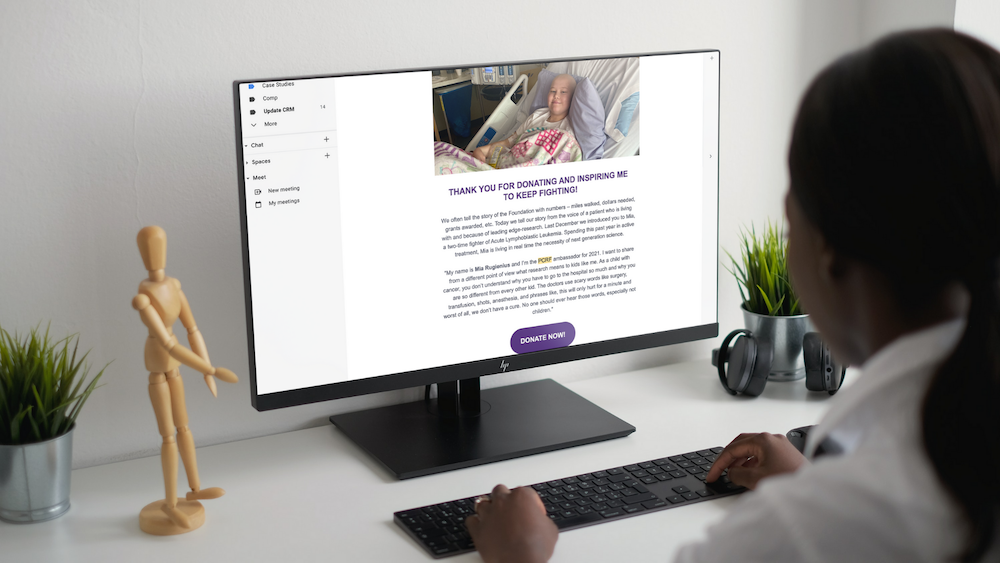First-party vs third-party data: Why your sources matter
If I had a nickel for everytime I heard the term “data-driven” in the nonprofit and association sphere, I would have a lot of nickels. But what does it really mean? What does it look like when data drives an organization?
And what kind of data are we talking about, anyway? There are different types of data, and it’s not all equally valuable.
Before you can start data-driven activities like effective email marketing and digital advertising, you need to understand first-party vs third-party data, and what each can do for you.
What is first-party data?
First-party data is the data you’ve collected directly from your supporters. It can include names, addresses, phone numbers, giving history, volunteer information, demographic information, behavior tracked on your website, social media conversations, notes, and survey responses.
Whether it’s a record of interactions, tracked behavior, or information they’ve provided, first-party data is straight from the source — your members and supporters.
This direct connection makes first-party data golden. The information in your member or supporter database is trustworthy. You don’t have to guess or make inferences; first-party data is about your specific supporters. That means that you can use it to connect with your unique audience in ways that are meaningful to them.
This kind of data is becoming increasingly important, as restrictions on third-party data collection increase and privacy regulations become more stringent.
The data you collect on your owned digital channels, like your website and email list, is reliable in the sense that it’s more likely to be accurate than other sources, but also in that you can rely on it, even as the digital landscape changes.
What is third-party data?
Third-party data is data that you obtain from any source that is not directly connected to your organization. This aggregate data is sourced from larger pools than you could access alone, but is obviously not as precise, since it’s not about your specific audience.
This kind of data can be useful to get a bigger picture of the behavior of people who have things in common with your audience, or for learning about new audiences. Third-party data is usually leased or purchased. Unlike your own first-party data, this data is available to other organizations.
Third-party data works best as a complement to your first-party data, not as a replacement. It doesn’t ultimately belong to you, so you remain dependent on a third-party to access it.
First (-party data) things first
Of course, data isn’t just for collecting. No matter what kind of data you have, it only becomes valuable once you use it to build relationships with your supporters or members, grow your audience, and make decisions.
Start your marketing plans with first-party data. Your CRM is likely filled with crucial information about your membership or supporters that will help you understand who they are and what they’re interested in.
First-party data is what makes personalization possible. It can help you craft messages to the right segments of your membership and create a cohesive and engaging donor, member, or volunteer experience.
Personalization relies on segmentation. Your first-party data helps you create segments of supporters or members. Instead of sending one-size-fits-all messages to everyone in your database, you can use your data to segment your audience into specific groups, like first-time donors, or long-term members.
You can sort people by their context and intent — this includes their preferred communication channels, involvement, interests, or website behavior — and this allows you to provide them with more relevant communications.
You can get quite sophisticated with first-party data. Using your email lists, you can create campaigns that serve digital ads to those addresses.
So if you have a list of lapsed donors you’re trying to reengage, or former volunteers you’d like to reconnect with, you can target them directly. Trying to guide first-time givers to that elusive second gift? Retargeting makes it simple.
Supplementing with third-party data
Third-party data is not as trustworthy or valuable as first-party data, but it can still have a role in your marketing strategy. It becomes more useful when you use it in conjunction with your first-party data.
For example, if you look at your first-party data, you may note certain similarities in groups of your supporters. Perhaps you find that a significant chunk of your new members are college-educated women in their forties who live in your city.
With this information, you can use third-party data to target advertising to people who meet these parameters. In Feathr, there's a campaign just for that: Affinity Targeting. This is much more likely to be successful than a random brand awareness campaign, or a membership drive without a specific target audience.
Finding your best practices
Once you start digging into data-heavy activities like digital advertising and audience segmentation, it’s easy to get overwhelmed. There are a lot of options, and there’s no shortage of experts ready to tell you what the “best practices” for marketing are.
External benchmarks can help you find the right ballpark figure, but they aren’t that useful on their own. After all, you could aim for the “best” click through rate and despair when you don’t hit it, and totally miss that you’ve improved by 20% of your previously highest rate.
Your supporters and members are unique, and so is your marketing.
It’s more important to do the best marketing and communication you can than it is to reach some ideal. Instead of comparing your organization to others, track your data to measure your progress against your past performance. Are things going better? Great! Does something need adjusting? Now you know!
You have enough to get started
Remember, if you only have first-party data, it can take you pretty far!
Your first-party data is a rich source of information for your marketing campaigns. The good news is that most nonprofits and associations actually have quite a bit of it.
Take a look at your data and look for trends, patterns, and opportunities to use it to reach out to your supporters and members. Then consider if you need additional third-party data to expand to a broader audience.
Ultimately, being data-driven is not about how much data your organization has. It’s about what kind of data you have and how you use it.
About the author:
Megan Donahue is a communications consultant, writer, and nonprofit nerd. She's the host of Love & Robots and fascinated by the intersection of nonprofits and technology.
Share this
You May Also Like
These Related Stories
![[Blog]-HowToReachANewGeneration-FeaturedImage-1000x500](https://www.feathr.co/hs-fs/hubfs/%5BBlog%5D-HowToReachANewGeneration-FeaturedImage-1000x500.png?width=1000&height=500&name=%5BBlog%5D-HowToReachANewGeneration-FeaturedImage-1000x500.png)
How to reach a new generation of volunteers and donors

4 ways to increase your association's non-dues revenue

.png?width=150&height=63&name=Feathr%20Logo-Main%20(1).png)
